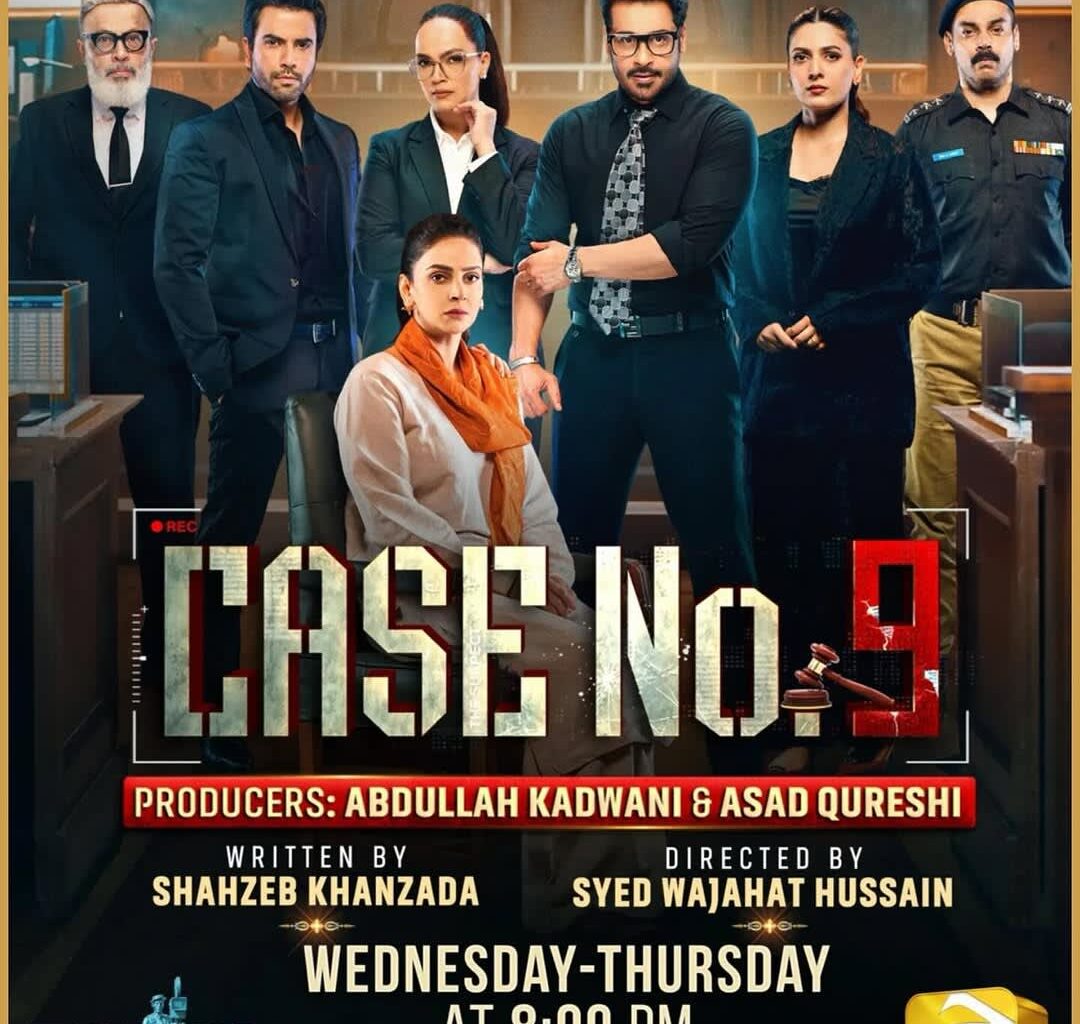Case No. 9 has emerged as one of Pakistan’s most captivating dramas in recent years, depicting trauma, justice, and human perseverance. While the idea might sound basic – a woman’s battle for justice after sexual assault – the script, performances, and directing lift it far beyond a traditional narrative. It’s more than simply another drama about a victim’s battle; it’s a masterclass in execution, realism, and emotional intensity.
The author of Case No. 9, from writer Shahzad Khanzada to director Syed Wajahat Hussain, address the challenging subject matter with unusual seriousness. Every frame, phrase, and reaction has emotional significance. The drama’s attention to detail fully immerses viewers, making them feel the tension, anguish, and little wins of its characters. Everything, from the courtroom scenes to the quiet, disturbing moments of trauma, feels genuine and meaningful.
One of the show’s biggest qualities is its performances. Saba Qamar (as Sehr) gives a hauntingly realistic portrayal of a woman navigating pain and the suffocating aftermath of an assault. Her bodily expressions—the unexpected jolts awake, the quiet moments of dread, and the fortitude to confront her perpetrator—make her performance profoundly moving. Faisal Qureshi’s portrayal of Kamran is equally multifaceted, alternating between arrogance and vulnerability, leading viewers to wonder his morality and motivations. Supporting actors such as Noorul Hassan, Amna Sheikh, and Junaid Khan provide credibility to their characters, anchoring the plot in reality.
Courtroom scenes require extra attention. They are a nice change from the histrionic, exaggerated court battles that are common in television shows. Every legal conversation here feels calculated and credible—the terminology, the cross-questioning, the judge’s demeanor, and even the subtle hierarchy among lawyers. The depiction of the courtroom—with restrictions on public attendance, concealing of the victim’s identity, and attention to procedural norms—reflects both rigorous investigation and respect for the gravity of sexual assault cases. The cross-examinations are sharply crafted, showing cultural attitudes such as victim-blaming without resorting to overt moralizing.
However, the show does have certain problems. Several viewers have noted the overuse of flashbacks, which, while intended to reinforce the characters’ emotional states, can occasionally slow down the pacing. These scenes occasionally rehash material that the spectator already knows, providing little fresh insight. The creators most likely utilized flashbacks to show how tragedy lingers and reshapes memory, but reducing them could make the plot tighter and more compelling.
However, this shortcoming appears small in comparison to the complexity of the current plot. The trial scenes, familial dynamics, and subtle hints regarding Kamran’s prior actions are all performed with care. Little things like the father’s defenseless quiet or the mother giving Sehr medication after the assault reveal layers of social criticism about how families internalize shame and silence in the face of sexual violence.
The play is also impressive in terms of technical execution. The camerawork, lighting, and sound design all work together to create emotional tension. One memorable scene is when the camera sweeps from a printer pumping out legal documents to the next day’s proceedings – a smooth transition that represents justice’s unwavering march, regardless of human pain.
What makes Case No. 9 stand out is how it humanizes each character. It refuses to depict individuals as black and white. The victim’s mother, divided between protecting her daughter and upholding the family’s image, exemplifies innumerable women caught in similar moral traps. Kamran’s wife and buddy provide moral complexity to the story, hinting at his past sins without making the plot predictable.
Finally, Case No. 9 works because it recounts a familiar story with unprecedented honesty and emotional intelligence. It forces viewers to confront painful realities — about the legal system, gendered trauma, and how society frequently fails the individuals it is supposed to protect.
In an industry prone to formulaic narrative, Case No. 9 stands out as a beautifully written drama that approaches its subject matter with depth, empathy, and sensitivity. Despite some pacing flaws, it is nonetheless a remarkable piece of storytelling – a reminder that when a narrative is handled with integrity, even the most known concepts may feel profoundly new.

